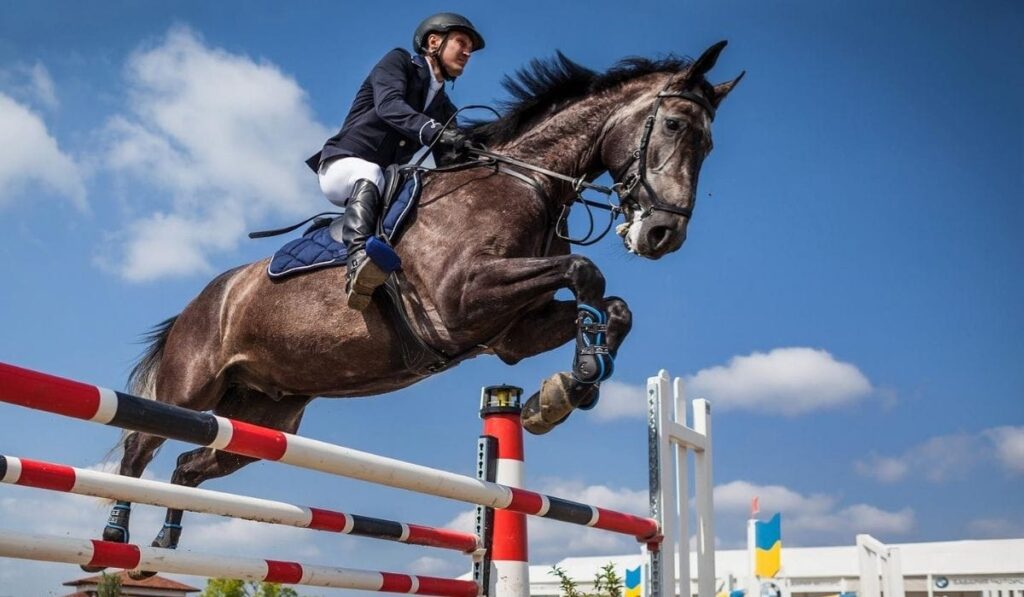Horse jumping is one of the most popular equestrian sports in the world. Since it is practised in all four corners of the globe, there are countless variants for this sport. This guide will help you to acquaint yourself with some of these variants and their accompanying riding gear, making it easier to understand what’s happening at the races and to make informed betting decisions.

What is Horse Jumping
There are many variations to horse jumping that have been invented over time all around the globe. The two major versions are show jumping and cross-country. Showjumping has a set course, usually consisting of jumps that are no more than 1.2 metres high, 4m wide, or 3m long. For every cleared obstacle, the height decreases by 20cm until it reaches 180cm when there are no obstacles left. A showjumping course measures 2000m to 2500m in length and takes approximately 45 to 50 seconds to complete. Once completed, the rider has to return along the same route (the ‘go-and-jump back’ rule) without knocking down any of the obstacles they passed on their way out.
The History of Horse Jumping
All the way back to the Ancient Olympics, the horse has been considered a symbol of power and nobility. With the rise in popularity during Renaissance Europe, it became customary for royalty to have their own horses.
The history of Horse Jumping starts with Xenophon who was at one time an Olympic competitor for Greece. Xenophon’s writings are what provides us with our first written accounts on how to work with horses, which is where our current training methods originate from.
Different types of jumping obstacles
The types of horse jumping obstacles you can expect to come up against in competitions and games range from poles and brushes to water and ditches. There are four main types:
- Fences: Fences are usually the closest thing to the ground, with the height gradually decreasing until it’s reached its final height of about 180cm. Fences needed for competition may be bamboo or white birch trees, while those used for leisure riding might be stone. You can choose to jump a single fence or multiple ones at once
- Poles: Poles are not allowed in competitive events but often feature in recreational games. They’re typically between 3 and 4 meters high and take up a large amount of legroom when jumped over – roughly 1.2 to 1.5 meters
- Brushes: Brushes are as close as a horse can get to a fence without knocking it down. They’re usually about 100cm high and ideally take up an area of about 1.5m x 1m, so you have to be careful not to knock them over while clearing them
- Ditches: These come in every variety and may be filled with water for extra difficulty. They can also contain sandy ditches which, like the name suggests, makes it very tricky to keep your footing.
Difference Between Showjumping And Cross-country
The main difference between showjumping and cross-country is that show jumps are in a fixed location and cross-country obstacles can be set up anywhere. Competition in showjumping is judged on the speed of the horse and rider, however, cross-country jumps are judged on safety and accuracy instead. This means that you need to keep your focus at all times while riding cross country, even if you’re riding through an unfamiliar course.
Want to put this knowledge to good use? Check out Timeform’s new customer offers and test your luck in winning big!

Leave a Reply